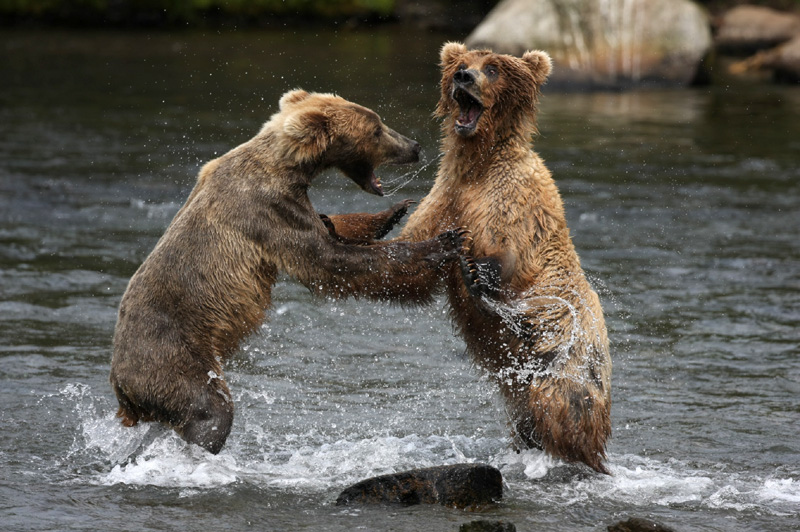
Canon 40D, 500mm f4L IS, 1/1000th @ f4.5, ISO 100, -2/3 exposure compensation.
I've been meaning to post this image for some time, but just haven't gotten around to it. This is one of my favorite shots from this past summer. I made it during a National Geographic Expeditions trip I was leading in July. The highlight of the trip (at least for me) is a short day trip out to Brooks Falls in Katmai National Park. Brooks is THE place to watch bears, which also, and unfortunately, makes it a very popular place. There are lots of tourists and people management instead of wildlife management seems to be the main chore of the park rangers. Nonetheless, it is a great place for photography. If your timing is right, the bears are plentiful, close, and very easy to photograph. I've seen point-and-shooters emerge from Brooks Falls with enviable images. Visit if you get the chance, it won't be a solitary experience, but you'll enjoy it.
I made this image from the lower platform at the falls. This is the spill-over platform and is usually much less crowded. I actually prefer it to the upper platform for photography because the perspective is lower and behavior is easier observe. These two sub-adult bears were bickering over a fishing spot and my location provided a great angle on the action. None of the photogs lining the railing on the upper platform could get this kind of shot.
I'd like to say this took some huge amount of skill to attain, but really it didn't. It was a matter of being in the right place at the right time and knowing my camera well enough to focus and compose quickly. In fact, let that be today's lesson:
Know Your Camera: To work fast in changing light or action, you must know the controls of your camera backwards and forwards and in the dark (literally). You should be able to operate all you camera's settings without removing your eye from the view-finder. Can you change the ISO, the f-stop and shutter speed without looking at your fingers? If not, spend some time with your camera learning where everything is located. It will speed you up when you need it, because in wildlife, portrait, and even to a certain extent, landscape photography, things move quickly. You must too.

No comments:
Post a Comment